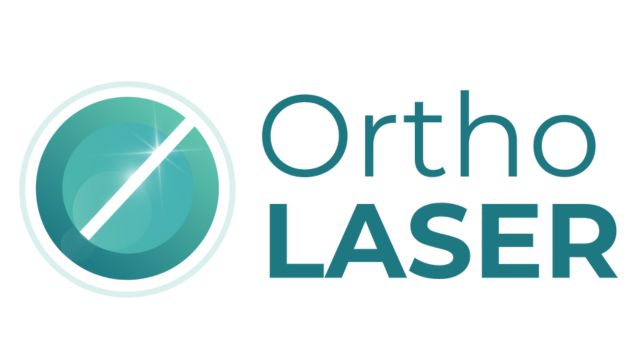Class IV Laser Therapy – Condition Evidence
Arthritis (e.g., knee osteoarthritis)
Recent systematic reviews find that photobiomodulation (PBM)/low‑level laser therapy can reduce pain and improve short‑term function in knee osteoarthritis when appropriate dosing is used. Effects are typically small‑to‑moderate and most evident in the first weeks after treatment; parameters (wavelength, dose per point, and number of sessions) matter.
Reference: Click here
Bone Spurs (e.g., heel spurs linked with plantar fasciitis)
Although lasers do not “dissolve” spurs, PBM has been shown to reduce heel pain and disability in plantar fasciitis— a condition commonly associated with calcaneal spurs—when clinically recommended doses are used.
Reference: Click here
Plantar Fasciitis
Multiple randomized trials pooled in meta‑analysis report meaningful short‑term pain relief and functional gains with PBM for plantar fasciitis, particularly when dose follows published guidelines.
Reference: Click here
Tennis & Golfer’s Elbow (lateral/medial epicondylalgia)
A classic meta‑analysis of randomized trials concluded that properly dosed PBM provides short‑term pain relief for lateral elbow tendinopathy; dosing adherence largely explains variability across trials.
Reference: Click here
Rotator Cuff Strains and Tears / Subacromial Impingement
Randomized, double‑blind work shows that adding PBM to a shoulder exercise program can further reduce pain and improve range of motion versus exercise alone in subacromial (rotator cuff–related) pain.
Reference: Click here
TMJ Disorder (jaw clicking and pain)
Systematic reviews and meta‑analyses of randomized trials report that PBM can reduce pain and improve mouth opening in temporomandibular disorders, though protocols vary and optimal dosing remains under study.
Reference: Click here
Herniated Discs (lumbar radiculopathy/sciatica)
A double‑blind randomized controlled trial in patients with discogenic lumbar radiculopathy found that PBM improved pain and disability outcomes versus sham, supporting its role as a conservative adjunct.
Reference: Click here
Tendinosis & Tendinitis (lower limb)
A recent meta‑analysis pooling plantar fasciitis and lower‑extremity tendinopathies found PBM improves patient‑reported pain and disability when delivered with evidence‑based parameters.
Reference: Click here
Bursitis (e.g., subacromial)
Clinical trials in subacromial pain suggest PBM can add benefit to exercise‑based care for pain and function; some trials using different parameters show mixed results, highlighting the importance of correct dosing.
Reference: Click here
Shin Splints (medial tibial stress syndrome)
Early randomized work in military recruits reported symptom improvement with PBM versus placebo; modern reviews note that evidence remains limited and newer, higher‑quality trials are needed.
Reference: Click here
Runner’s Knee (Patellofemoral Pain Syndrome)
Randomized studies indicate PBM can reduce anterior knee pain and improve function in PFPS, especially as part of a rehab program; emerging comparisons also explore high‑intensity protocols.
Reference: Click here
Carpal Tunnel Syndrome
Recent systematic reviews (including 2025 analyses) suggest PBM can reduce pain and improve hand function in mild‑to‑moderate CTS, with effects influenced by wavelength, dose, and session count.
Reference: Click here
Ligament Tears (healing support)
Preclinical and in‑vitro studies show PBM can stimulate collagen type I synthesis and fibroblast activity in ligament tissue, biologically supporting its use alongside rehab following ligament injury or repair.
Reference: Click here
Sciatica
In disc‑related radiculopathy, randomized, double‑blind trials report PBM can lessen pain and disability measures versus sham; PBM may be combined with exercise and other conservative care.
Reference: Click here
Bunions (hallux valgus) – pain around the big toe
Direct PBM trials for bunions are scarce; however, PBM has demonstrated postoperative analgesic and anti‑inflammatory benefits in surgical populations and efficacy in several foot/ankle pain conditions, supporting its adjunctive use for bunion‑related soft‑tissue pain.
Reference: Click here
Hip Discomfort (including post‑surgical pain)
A randomized, triple‑blind clinical trial after total hip arthroplasty found PBM reduced acute postoperative pain and inflammation versus placebo, consistent with PBM’s anti‑inflammatory effects.
Reference: Click here
Neck, Back, and Leg Pain
A landmark Lancet meta‑analysis concluded PBM provides short‑ to medium‑term relief for neck pain; separate reviews and RCTs also support benefits in low back pain, including with higher‑intensity laser protocols.
Reference: Click here
Tailbone Injury (coccyx pain)
Evidence is limited, but case reports describe meaningful pain reduction in refractory coccydynia with laser‑based protocols, suggesting PBM as a low‑risk adjunct when standard care has not helped.
Reference: Click here
Nerve Injury, Damage & Dysfunction
Systematic reviews indicate PBM can promote peripheral nerve regeneration and functional recovery by modulating inflammation and supporting Schwann‑cell/axonal processes; dosing varies by indication.
Reference: Click here
Post‑Operative Healing & Recovery
Recent randomized trials in oral/implant surgery show PBM can speed soft‑tissue healing and reduce postoperative pain and swelling, aligning with its broader anti‑inflammatory and pro‑repair mechanisms.
Reference: Click here
Notes: PBM/laser therapy should be delivered by trained clinicians using eye protection and medically appropriate parameters. Individual results vary; PBM complements (not replaces) diagnosis‑led care and rehabilitation.
Arthritis (e.g., knee osteoarthritis)
Recent systematic reviews find that photobiomodulation (PBM)/low‑level laser therapy can reduce pain and improve short‑term function in knee osteoarthritis when appropriate dosing is used. Effects are typically small‑to‑moderate and most evident in the first weeks after treatment; parameters (wavelength, dose per point, and number of sessions) matter.
Reference: https://academic.oup.com/ptj/article/104/8/pzae073/7679396


Bone Spurs (e.g., heel spurs linked with plantar fasciitis)
Although lasers do not “dissolve” spurs, PBM has been shown to reduce heel pain and disability in plantar fasciitis— a condition commonly associated with calcaneal spurs—when clinically recommended doses are used.
Reference: https://bmjopen.bmj.com/content/12/9/e059479
Plantar Fasciitis
Multiple randomized trials pooled in meta‑analysis report meaningful short‑term pain relief and functional gains with PBM for plantar fasciitis, particularly when dose follows published guidelines.
Reference: https://bmjopen.bmj.com/content/12/9/e059479


Tennis & Golfer’s Elbow (lateral/medial epicondylalgia)
A classic meta‑analysis of randomized trials concluded that properly dosed PBM provides short‑term pain relief for lateral elbow tendinopathy; dosing adherence largely explains variability across trials.
Reference: https://bmcmusculoskeletdisord.biomedcentral.com/articles/10.1186/1471-2474-9-75
Rotator Cuff Strains and Tears / Subacromial Impingement
Randomized, double‑blind work shows that adding PBM to a shoulder exercise program can further reduce pain and improve range of motion versus exercise alone in subacromial (rotator cuff–related) pain.
Reference: https://link.springer.com/article/10.1007/s10067-011-1757-7


TMJ Disorder (jaw clicking and pain)
Systematic reviews and meta‑analyses of randomized trials report that PBM can reduce pain and improve mouth opening in temporomandibular disorders, though protocols vary and optimal dosing remains under study.
Reference: https://onlinelibrary.wiley.com/doi/pdfdirect/10.1155/2018/4230583
Herniated Discs (lumbar radiculopathy/sciatica)
A double‑blind randomized controlled trial in patients with discogenic lumbar radiculopathy found that PBM improved pain and disability outcomes versus sham, supporting its role as a conservative adjunct.
Reference: https://europepmc.org/article/pmc/8898844


Tendinosis & Tendinitis (lower limb)
A recent meta‑analysis pooling plantar fasciitis and lower‑extremity tendinopathies found PBM improves patient‑reported pain and disability when delivered with evidence‑based parameters.
Reference: https://bmjopen.bmj.com/content/12/9/e059479
Bursitis (e.g., subacromial)
Clinical trials in subacromial pain suggest PBM can add benefit to exercise‑based care for pain and function; some trials using different parameters show mixed results, highlighting the importance of correct dosing.
Reference: https://link.springer.com/article/10.1007/s10067-011-1757-7


Shin Splints (medial tibial stress syndrome)
Early randomized work in military recruits reported symptom improvement with PBM versus placebo; modern reviews note that evidence remains limited and newer, higher‑quality trials are needed.
Reference: https://europepmc.org/article/MED/7801390
Runner’s Knee (Patellofemoral Pain Syndrome)
Randomized studies indicate PBM can reduce anterior knee pain and improve function in PFPS, especially as part of a rehab program; emerging comparisons also explore high‑intensity protocols.
Reference: https://www.sciencedirect.com/science/article/pii/S1360859221000036


Carpal Tunnel Syndrome
Recent systematic reviews (including 2025 analyses) suggest PBM can reduce pain and improve hand function in mild‑to‑moderate CTS, with effects influenced by wavelength, dose, and session count.
Reference: https://link.springer.com/article/10.1007/s10103-024-04276-9
Ligament Tears (healing support)
Preclinical and in‑vitro studies show PBM can stimulate collagen type I synthesis and fibroblast activity in ligament tissue, biologically supporting its use alongside rehab following ligament injury or repair.


Sciatica
In disc‑related radiculopathy, randomized, double‑blind trials report PBM can lessen pain and disability measures versus sham; PBM may be combined with exercise and other conservative care.
Reference: https://europepmc.org/article/pmc/8898844
Bunions (hallux valgus) – pain around the big toe
Direct PBM trials for bunions are scarce; however, PBM has demonstrated postoperative analgesic and anti‑inflammatory benefits in surgical populations and efficacy in several foot/ankle pain conditions, supporting its adjunctive use for bunion‑related soft‑tissue pain.
Reference: https://bmjopen.bmj.com/content/12/9/e059479


Hip Discomfort (including post‑surgical pain)
A randomized, triple‑blind clinical trial after total hip arthroplasty found PBM reduced acute postoperative pain and inflammation versus placebo, consistent with PBM’s anti‑inflammatory effects.
Reference: https://link.springer.com/article/10.1007/s10103-018-2558-x
Neck, Back, and Leg Pain
A landmark Lancet meta‑analysis concluded PBM provides short‑ to medium‑term relief for neck pain; separate reviews and RCTs also support benefits in low back pain, including with higher‑intensity laser protocols.
Reference: https://www.thelancet.com/pdfs/journals/lancet/PIIS0140-6736(09)61522-1.pdf


Tailbone Injury (coccyx pain)
Evidence is limited, but case reports describe meaningful pain reduction in refractory coccydynia with laser‑based protocols, suggesting PBM as a low‑risk adjunct when standard care has not helped.
Reference: https://europepmc.org/article/MED/32028396

Lorem ipsum dolor sit amet, consectetur adipiscing elit quisque sagittis mi non tincidunt molestie aliquam iaculis sodales leo vel aliquet donec id lorem.
Read moreEmergency Procedures

Lorem ipsum dolor sit amet, consectetur adipiscing elit quisque sagittis mi non tincidunt molestie aliquam iaculis sodales leo vel aliquet donec id lorem.
Read moreDental Veneers

Lorem ipsum dolor sit amet, consectetur adipiscing elit quisque sagittis mi non tincidunt molestie aliquam iaculis sodales leo vel aliquet donec id lorem.
Read moreCrowns and Bridges

Lorem ipsum dolor sit amet, consectetur adipiscing elit quisque sagittis mi non tincidunt molestie aliquam iaculis sodales leo vel aliquet donec id lorem.
Read moreTeeth Whitening

Lorem ipsum dolor sit amet, consectetur adipiscing elit quisque sagittis mi non tincidunt molestie aliquam iaculis sodales leo vel aliquet donec id lorem.
Read moreAdvanced Dentistry

Lorem ipsum dolor sit amet, consectetur adipiscing elit quisque sagittis mi non tincidunt molestie aliquam iaculis sodales leo vel aliquet donec id lorem.
Read moreDental Implants

Lorem ipsum dolor sit amet, consectetur adipiscing elit quisque sagittis mi non tincidunt molestie aliquam iaculis sodales leo vel aliquet donec id lorem.
Read moreDental Orthodontics

Lorem ipsum dolor sit amet, consectetur adipiscing elit quisque sagittis mi non tincidunt molestie aliquam iaculis sodales leo vel aliquet donec id lorem.
Read more